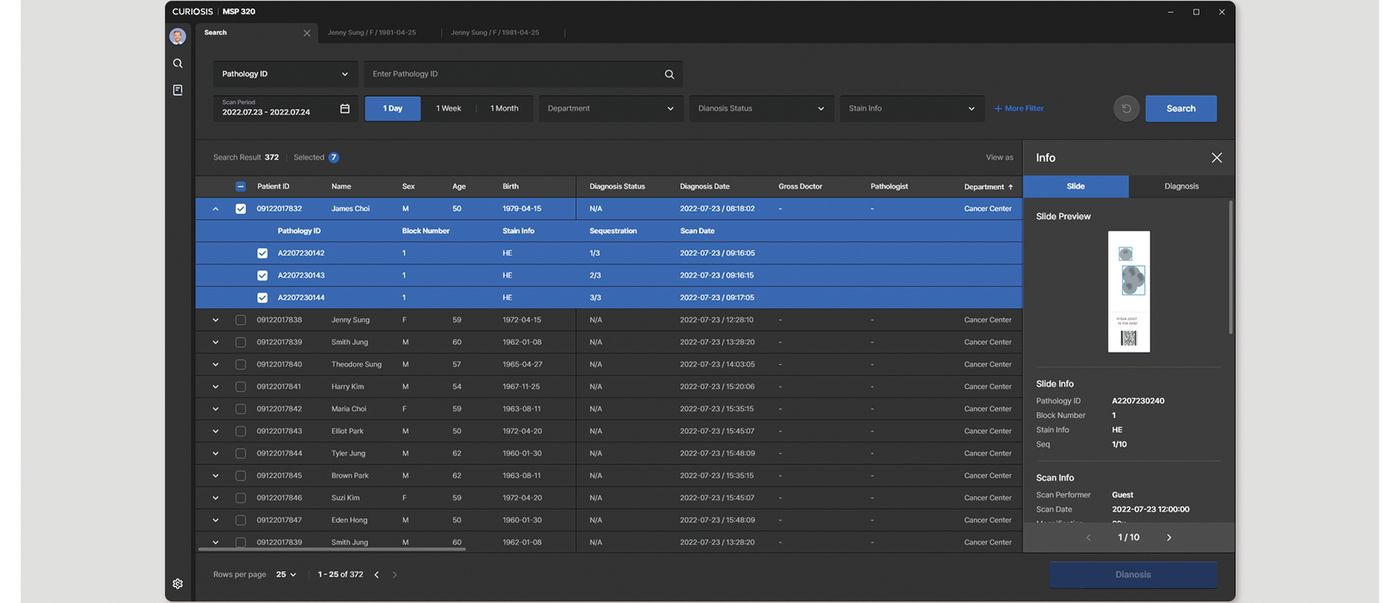
Curiosity, innovation and forward thinking are the building blocks that Curiosis uses to develop, produce and supply laboratory equipment for life science applications. Founded in 2015, the company aspires to create a better future for mankind and has developed award-winning microscopes and digital pathology devices.
Interview with Curiosis Inc.
Red Dot: What makes the user interface of the MSP 320 automated digital slide scanner intuitive?
Curiosis Inc.: The interface was designed for pathologists, as well as for ease of use and efficiency. At the heart of this design is a 23" touchscreen that offers intuitive controls, a clear, simple interface, easy-to-understand icons and minimal cluttering. Real-time guidance provides immediate feedback and support, helping operators to familiarise themselves with its use. This user-focused design also reduces the learning curve, making the transition from traditional to digital pathology smooth and straightforward
What other key features did you incorporate to optimise the user experience?
One key feature is continuous tray loading for uninterrupted workflows and high-resolution imaging at 0.19 μm/pixel for precise visualisation. The A4-sized tray design also simplifies slide handling. Secure data storage and easy retrieval enhance both accessibility and security. Collectively, these features ensure a very efficient and user-friendly diagnostic process.
How much visual design goes into a digital pathology scan?
The visual design of digital slides is central to accurate diagnosis. The MSP 320 offers high-resolution images that provide a clear view of cellular structures with a focus on contrast and readability. Important features are highlighted in black and white to ensure that they stand out. Advanced stitching delivers seamless images, even at high zoom levels. Visual cues within the interface also guide users, facilitating quick and accurate assessments.
In what ways can your UI design benefit patients?
Our UI design significantly enhances patient outcomes by streamlining the diagnostic process and improving accuracy. The intuitive user interface allows pathologists to focus on the diagnosis and it reduces turnaround times for results. Faster and more precise diagnoses facilitate timely treatment and boost patient recovery rates. High-resolution images make precise assessments possible, ultimately contributing to better patient care and overall healthcare efficiency.

